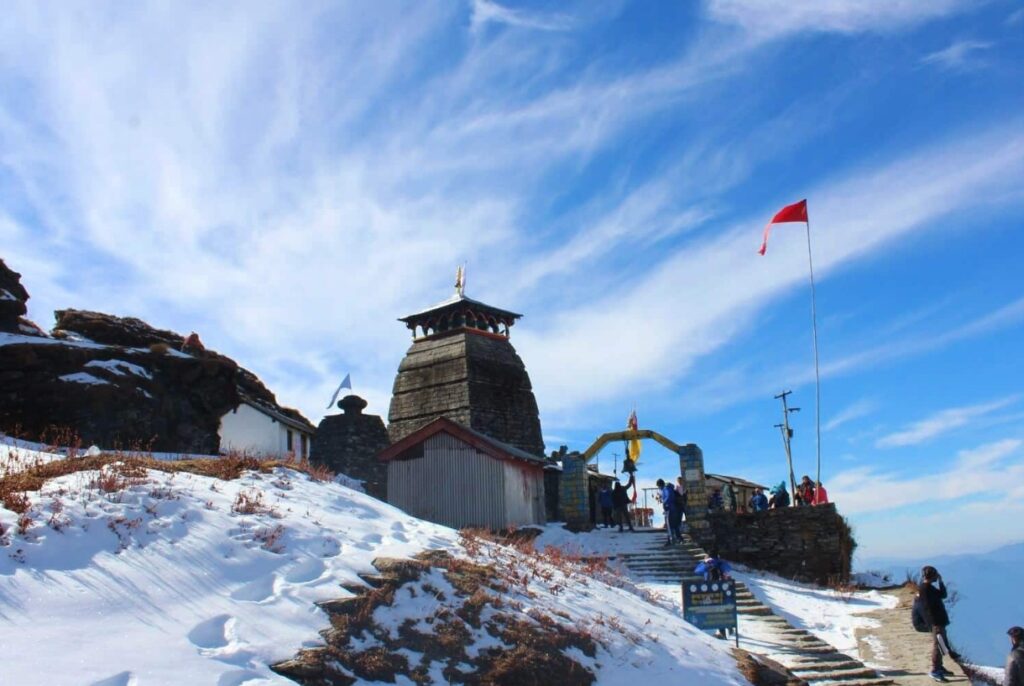When you think of Himalayan treks that combine adventure, beauty, and variety, the Hampta Pass Trek often tops the list. This trek is famous for its contrasting landscapes – lush green valleys of Kullu on one side and the barren, desert-like Spiti region on the other. Imagine walking through pine forests one day and suddenly stepping into a cold desert the next. That’s the magic of Hampta Pass.
If you are new to trekking, this blog will act as a friendly guide to help you understand everything about Hampta Pass Trek – from what to expect, when to go, what to carry, and why it’s often compared with other iconic treks like the Sandakphu Trek.
Why Choose Hampta Pass Trek?
The Hampta Pass Trek is special because it offers:
-
Dramatic landscapes – Green meadows, glacier streams, snowy peaks, and then, suddenly, barren Spiti.
-
Moderate difficulty – Not too easy, not too tough. Perfect for beginners with a bit of fitness.
-
Unique crossover – It connects Kullu Valley with Lahaul-Spiti Valley, giving you two contrasting worlds in one trek.
-
Scenic campsites – Each campsite, from Jobra to Balu ka Ghera, feels like a different painting.
If you’ve ever trekked or read about the Sandakphu Trek, you’ll notice a similarity. Just like Sandakphu gives you a grand view of Kanchenjunga and Everest, Hampta offers ever-changing sceneries that make every day exciting.
Where is Hampta Pass Located?
The trek starts from Manali in Himachal Pradesh. From there, trekkers drive to Jobra, the base camp. The pass itself lies at an altitude of 14,100 ft, connecting the lush Kullu Valley to the dry Spiti Valley.
Best Time to Do the Hampta Pass Trek
The ideal season is June to September.
-
June – July: Snow lovers will find patches of snow and icy rivers.
-
August – September: Meadows bloom with wildflowers, and the skies are clearer for photography.
During winter, the route becomes inaccessible due to heavy snow, unlike the Sandakphu Trek, which can be done in longer windows.
How Difficult is Hampta Pass Trek?
Hampta Pass is considered moderate in difficulty. Here’s why:
-
You trek for 4–6 hours daily on average.
-
There are river crossings, boulder walks, and steep climbs.
-
The highest point is 14,100 ft, which means acclimatization is important.
If you’ve done something like the Sandakphu Trek, you’ll find Hampta Pass slightly more challenging because of altitude and snow crossings. But with basic fitness, it’s totally doable.
Duration of the Trek
The Hampta Pass Trek usually takes 5 to 6 days. A common itinerary looks like this:
-
Day 1: Manali to Jobra, trek to Chika.
-
Day 2: Chika to Balu ka Ghera.
-
Day 3: Balu ka Ghera to Hampta Pass, then descend to Shea Goru.
-
Day 4: Shea Goru to Chatru.
-
Day 5: Drive to Chandratal Lake (if the road is open) and return to Manali.
Major Highlights of Hampta Pass Trek
Jobra to Chika
Your first walk takes you through dense pine and maple forests, with waterfalls and meadows. It feels like a fairytale beginning.
Balu ka Ghera
This site is a sandy plain surrounded by snowy peaks. Perfect place to spot wildflowers in monsoon.
Hampta Pass Crossing
The most thrilling day! You climb steeply, often walking on snow patches, and then descend into the Spiti Valley’s dry landscapes.
Chandratal Lake
If roads permit, you’ll visit the breathtaking moon-shaped lake in Spiti. Its turquoise water is unforgettable.
What to Pack for Hampta Pass Trek
Here’s a checklist to make your trek comfortable:
-
Clothing:
-
Thermal inners, fleece jacket, down jacket.
-
Waterproof gloves, warm cap, and trekking pants.
-
Raincoat or poncho.
-
-
Footwear:
-
Good quality trekking shoes with ankle support.
-
Extra pairs of woolen socks.
-
-
Essentials:
-
Sunglasses and sunscreen (UV is harsh).
-
Water bottles and energy bars.
-
Trekking pole for balance.
-
First aid kit with medicines for altitude sickness.
-
Food and Stay on the Trek
-
Campsites are usually set up with tents and sleeping bags.
-
Food includes simple, nutritious meals like dal, rice, vegetables, and chapatis.
-
At higher camps, warm soups and tea are a blessing in the cold.
Tips for First-Time Trekkers
-
Prepare your fitness: Jogging, stair climbing, or brisk walking for a month before helps.
-
Stay hydrated: Even if it’s cold, drink plenty of water to avoid altitude sickness.
-
Layering is key: Instead of one heavy jacket, wear multiple light layers.
-
Respect nature: Carry back your waste and keep the trails clean.
-
Keep buffer days: Weather in the Himalayas is unpredictable.
Comparing Hampta Pass Trek with Sandakphu Trek
Both treks are popular among beginners but have unique charms:
-
Sandakphu Trek is famous for panoramic views of four world’s tallest peaks – Everest, Kanchenjunga, Lhotse, and Makalu.
-
Hampta Pass Trek is about dramatic landscape changes – from greenery to desert.
-
Sandakphu offers cozy tea-houses, while Hampta has raw wilderness camping.
-
Difficulty-wise, Sandakphu is slightly easier, while Hampta offers more adventure.
So, if Sandakphu feels like a scenic storybook, Hampta Pass feels like stepping into different worlds chapter by chapter.
Why Hampta Pass Trek is Worth Your Time
-
It’s beginner-friendly yet adventurous.
-
Every day brings new landscapes.
-
You get a taste of two different valleys in one trek.
-
Perfect for those who want to experience both camping and high-altitude adventure.
Final Thoughts
The Hampta Pass Trek is more than just a hike – it’s a journey that shows you the Himalayas’ versatility. One moment you’re surrounded by forests and flowers, and the next you’re in a desert-like valley staring at snow peaks. If you’re someone who loves variety, this trek won’t disappoint.
For beginners, it’s a perfect first Himalayan trek. And if you’ve already done treks like the Sandakphu Trek, Hampta will give you a brand-new flavor of adventure.
So, pack your bag, lace up your boots, and get ready for one of the most memorable journeys of your life.




More Stories
What to Expect When You Book a Limo Service in Boulder, CO: A Simple Guide
What Makes Private Car Services and Wedding Transportation Essential in Charleston County?
The Best Wedding Party Transportation in Charleston County: A Complete Guide